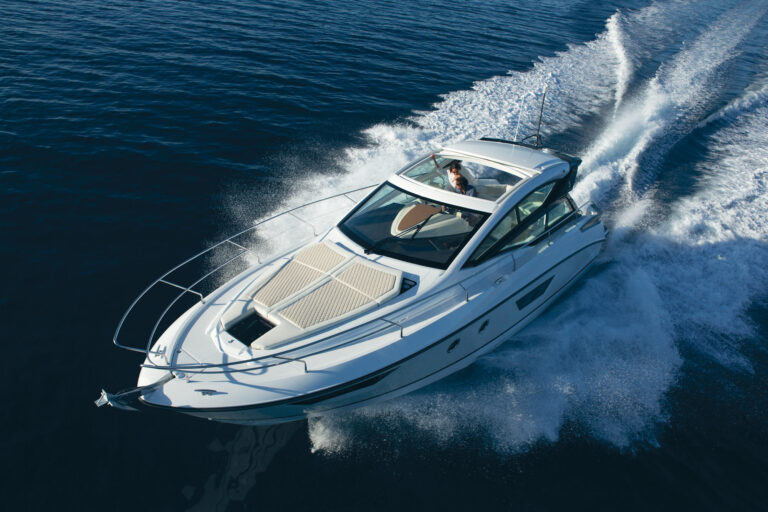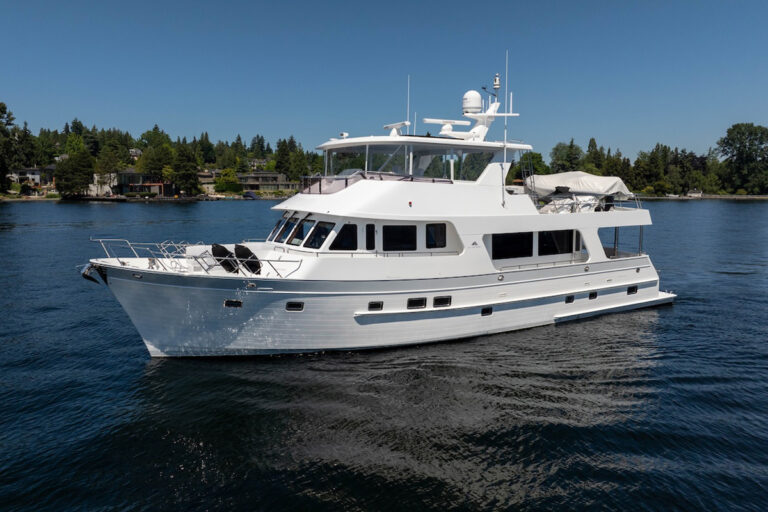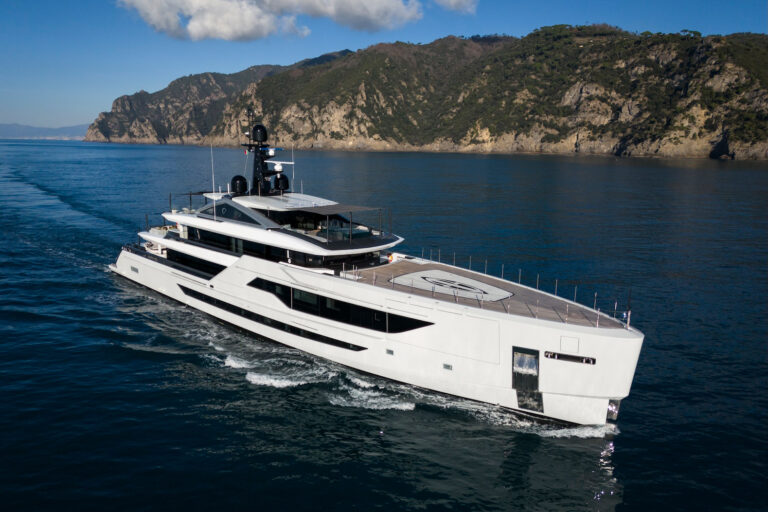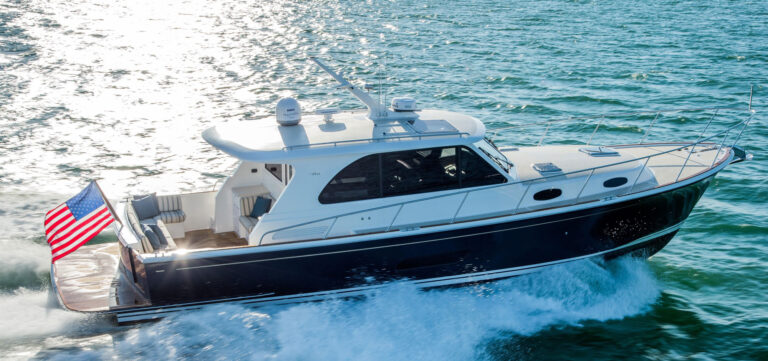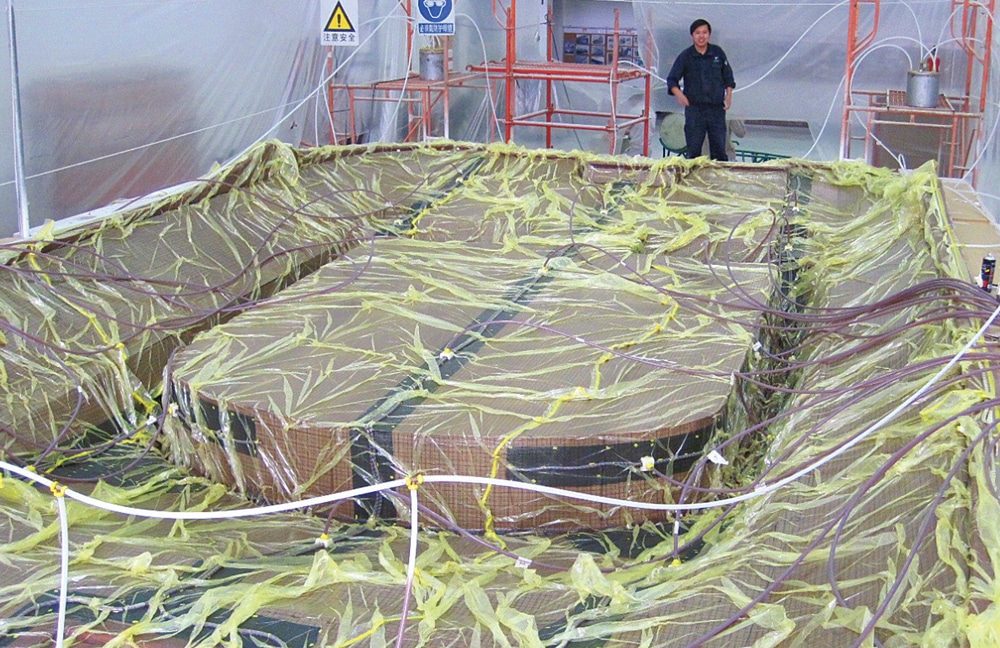
Building More Efficient Boats
A 102-foot catamaran built almost entirely of carbon fiber set out last year to circumnavigate the globe using solar power alone. Tûranor PlanetSolar has made its way from Monaco to Miami and, at this writing, is already through the Panama Canal and well into the Pacific Ocean.
This extreme example shows the efficiency that can be achieved when a designer and yard get serious about losing weight. The trend is continuing as yards become better at building light and manufacturers develop more lightweight materials.
“We’ve never been able to build a boat that was too light,” said Michael Peters, president of Michael Peters Yacht Design in Sarasota, Florida. “To build a boat that a consumer would want, you can’t take enough weight out of it.”
The primary advantage of building lighter boats, whether power or sail, is efficiency. For powerboats, less weight means a builder can either make it go faster with the same power or make it run the same speeds as a heavier version with smaller engines. It also makes the boat more responsive to acceleration and maneuvers, which means it’s more fun to drive.
Weight in a boat — or the lack of it — has consequences. Heavier boats need bigger motors, larger fuel tanks and a heavier overall structure to support it all. Fuel is estimated to make up 15 percent of a boat’s weight. So lighter builds, with smaller engines, require less fuel capacity and a less robust internal structure. A side benefit of the lighter boat: Engines and fuel tanks take up less space, so there’s more interior space for designers to use.
With fuel costs ever climbing, efficiency relates directly to the bottom line as well. “What wasn’t an issue back in the ’70s, but is now, is fuel economy,” said Mark Lindsay, president of Boston Boat Works, which has been building lightweight hulls since 1975. “When fuel went from pennies per gallon to multiple dollars per gallon, it became a whole new concern.”
Ask any sailboat racing enthusiast and he or she will tell you that building light boats is nothing new. Additionally, many of the materials have been around for decades. Epoxy resin has been adopted for its toughness and flexibility over vinylester and polyester resins for years. Carbon fiber and Kevlar are popular materials that have been used to add stiffness and strength while saving weight. And coring, such as Baltek balsa and closed-cell foam materials such as Airex, Corecell and Nida-Core, which save weight and add strength and stiffness, were once the realm of the cutting edge but now are used much more often. Some fiberglass weaves such as S-glass and E-glass are more recent, but the bigger breakthroughs have come in construction processes. “Intelligent design and processing lead to better boats,” Lindsay said. “Materials are just easier to talk about.”
Peters said that, for many of his designs, a yard would bring in a structural engineer to work out the best lamination schedule. Hodgdon Yachts in East Boothbay, Maine, worked with an outside advanced-composite engineering company on its last two projects, boats for the Navy and for a private owner.
“We learned a great deal about what the concepts are and what goes into making a light boat with adequate strength,” said Kevin Houghton, senior structural designer at Hodgdon. The company also designed the boats in three-dimensional models from which all drawings were extracted, resulting in better-fitting components because of the tighter tolerances that were created in the process.
In conventional construction, fiberglass is laid into a mold and resin is brushed on. Workers then use rollers to spread out the resin and force the liquid into the fiberglass mat. The hull is left to cure in the mold, often with more resin than it needs — excess weight.
The three best-known processes for saving weight during lamination are resin infusion, resin impregnation and pre-impregnation. All save weight by preventing excess resin. They all also use vacuum pressure in the process to force the fiberglass, core and resin together for a stronger bond.
The best-known form of resin infusion is Seemann Composites Resin Infusion Molding Process (SCRIMP), and many manufacturers licensed it before Seemann’s patent expired. Other builders use their own variation of the process. The key is to ensure that the proper amount of resin is distributed through the system at the start. Specify too much and you’ll end up with a part that’s just as heavy as one rolled by hand.
In wet impregnation, the fiberglass fabric is fed through rollers that squeeze the epoxy resin into the material. The wetted fiberglass is then laid into the mold. Once all the layers are in place, vacuum pressure ensures that they bond well while removing excess resin. The mold is put in a large oven and heated for a specific time to ensure that the resin “kicks,” or fully cures.
Another method is pre-impregnation. Because epoxy resins cure at room temperature, the rolls of resin-soaked fiberglass must be kept in a cooler and applied in a chilled facility. They are rolled into the hull and bonded with vacuum pressure, then cooked to cure the resin.
Doug Zurn of Zurn Yacht Designs in Marblehead, Massachusetts, who designed the MJM series of motoryachts, said that impregnation supplies the best balance of affordability and precision. Added Lindsay, whose Boston Boat Works builds the MJM series, “We’ve found over the years that we can achieve the same resin concentrations with the wet preg as the pre-preg for a fraction of the cost.”
Beyond the hull and deck, builders can take a great deal of weight out of a boat on the interior and in the engine room. Peters estimates that only 50 percent of the overall weight is determined by how you build the boat. The rest is in what you install in it. Zurn doesn’t use carbon much in hulls, but in superstructures and masts. “We don’t mind a little mass in the hulls because you’re dealing with wave impacts, and that dampens sounds,” he explained.
In a combined initiative to make boats lighter and greener, many yards are now using veneer panels cored with honeycomb aluminum or plastic or even paper. They look like the real thing, are environmentally friendly and will last forever. The same can be done with stone, said Greg Marshall, president of Greg Marshall Design in Vancouver, British Columbia, who uses honeycomb-backed marble in his designs to generate huge weight savings. Additionally, honeycomb-cored panels have excellent sound-deadening qualities and are all the same width, which facilitates installation.
Just as construction technology has produced weight savings, so have advances in propulsion, components and system placement. Pod-drives are lighter than inboards or stern-drives and, because they’re more efficient, engines can be smaller. Some designers are even looking at using lightweight turbine engines in series.
Marshall estimates that using carbon-fiber propellers produces an 80 percent weight savings per wheel over traditional metal props. Plus, carbon-fiber propellers are easier to repair because the blades can be taken off individually.
Zurn explained that companies that make galley appliances, air-conditioning systems and generators are all competing to make smaller, lighter units, which reduces the overall weight of the boat. Even LED televisions contribute to weight savings.
Rigging also helps lighten the load. For example, positioning the generator as close to the water intakes as possible reduces the amount of plumbing needed.
Zurn said that owners who take an extra-long look at how they will use the boat could help reduce the weight before construction even starts. Owners who are mainly going to use the boat for entertaining, as opposed to extended cruising, can go with one or two staterooms and save the weight of the third.
With all the positives of going light, there are negatives — mainly cost. Building a lightweight vessel out of exotic materials is complicated. “You can take a 25-foot boat and build it in a production shop in a day or two,” Peters said. “Build the boat in advanced composites, and you’re going to be at it for a month.” Fabricating cored interior panels takes more steps and requires additional manpower. Building a light interior can also be more costly than constructing a lightweight hull and deck.
Marshall said that, in some cases, changing people’s perceptions of lightweight boats can be a challenge. “When we build a lightweight boat, we build lightweight cabinets, but we keep the doors heavy,” he said. This gives the owner the perception that the boat is built for heavy-duty use — they feel more substantial.
In terms of performance, if you build the boat too light, it won’t ride well in rough conditions. Lindsay said understanding the design is critical. He explained that Zurn understood this from the beginning when developing the MJM line. These boats have a different bottom design from that of a traditional Down East hull, because they were intended to be light from the start.
Building a boat with exotic materials also means that people who repair them need to know their business. Marshall explained that it’s more difficult to make a repair to a door cored with honeycomb aluminum than to a solid-wood door. Lindsay said that there are enough skilled technicians worldwide that it’s not an issue. “We have boats all over the world,” he said. “There’s a network of people who know each other.”
In the growing world of lightweight yachts, the pros far outweigh the cons. Efficiency, fuel economy and the wow factor of performance mean that weight loss is here to stay.





